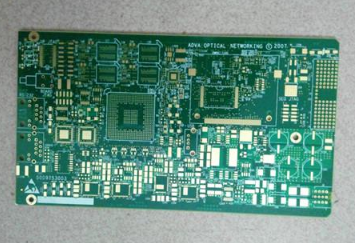When low resistance is detected between component pins, the best way is to remove the components from the PCB circuit for special testing. If the resistance is still low, then this component is the culprit, otherwise further investigation is needed. Care should be taken when desoldering, so as not to damage the copper pads on the PCB or directly pull out the components to be tested from the PCB.
Visual inspection is only applicable to the appearance inspection of the circuit board, it may not be applicable to the inner layer inspection of the circuit board. If there are no obvious defects in the appearance, you need to power on the circuit board and perform more detailed tests to detect whether the circuit board is normal.
Locate the PCB short circuit problem

The above detection method has limitations, and it is because the detection is performed without powering on the circuit board. Only a limited number of problem points can be detected. In other words, it is easier to find the exact location of defects that are difficult to find, such as a short circuit on a powered-on circuit board. This involves using tools such as a voltmeter to measure the voltage drop on copper traces, or using an infrared camera to identify heating problems.
low voltage measurement
This technology involves controlling the amount of current passing through a short circuit and finding out where the current flows. Since the copper traces on the circuit board also have resistance, the voltages generated by different parts of the copper traces are also different. The amount of voltage depends on the length, width, and thickness of the copper traces. Because these factors cause different resistance values, the corresponding voltage values are also different.
It is very important to set a useful safety current for testing, but its value cannot exceed the wire or equipment safety threshold. A typical setting provides a supply voltage of 2 volts with a maximum current of approximately 100 mA. This will provide a total usable power of about 200mW, which is not enough to damage any components except very sensitive components. Sometimes, you can also use a low voltage with (such as 0.4 volt) current as high as 1 ampere or higher, but care should be taken to limit the current to a safe value that will not burn the copper traces.
Using a voltmeter, you can easily measure the voltage difference between the two ends of the copper trace. Placing the two probes of the voltmeter between the various parts of the copper trace length will indicate the voltage difference and its positive and negative polarity, thus indicating the direction of current flow. When measuring the voltage between different parts along the short-circuit line, it is found that the voltage value is getting smaller and smaller, and it is getting closer and closer to the short-circuit. If the PCB is short-circuited, the short-circuit voltage drop will be zero or very low, and no current will flow beyond this point.
The millivolt test requires a sensitive voltmeter, which can measure low voltages in the microvolt and millivolt range. For example, when a current of 1 ampere flows through a copper trace with a resistance of 1 milliohm, a voltage of 1 millivolt will be generated. A sensitive voltmeter should be able to measure and display this voltage value. The typical instrument is the Fluke 87-V digital multimeter. It has a 5-digit digital display and a resolution of 10 microvolts.